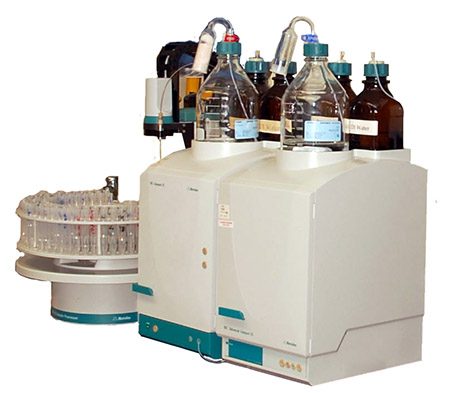ION CHROMATOGRAPHY SERVICES
Ion Chromatography (IC) is a powerful analytical technique that uses an ion exchanger to quickly and accurately distinguish between different types of ions and polar molecules.
Ion Chromatography can be incredibly useful in analyzing charged molecules, from massive proteins to small nucleotides and amino acids.
IC Testing helps to identify, quantify and separate ions in complex mixtures. Some of its uses are measuring pollutants in drinking water, identifying additives such as sugar or salt content within food products, and assisting in biological applications like DNA sequencing.
IC Testing Process
IMR's IC Testing lab measures concentrations of ionic species by separating them based on their interaction with a resin. Ionic species separate differently depending on species type and size.
The IC Testing process permits the dynamic separation and detection of anions in an aqueous solution.
Types of IC Testing
The two types of ion chromatography are anion-exchange and cation exchange.
With cation exchange chromatography, positively charged molecules can be successfully isolated. Similarly, anion exchange chromatography allows researchers to accurately separate negatively charged molecules – providing two effective avenues for targeted separation.
Industries that use IC Testing
IC Testing is employed in various applications, ranging from the clinical utility field to industrial uses and pharmaceutical drug development. It has proven especially useful for protein purification, water analysis, and quality assurance processes.
Why Choose IMR Test Labs for Ion Chromatorgraphy Services
IC Testing is employed in various applications, ranging from the clinical utility field to industrial uses and pharmaceutical drug development. It has proven especially useful for protein purification, water analysis, and quality assurance processes.
For more information, or to request materials testing, click on the buttons below.

IC Testing of Halogens and Ions in Aqueous Solutions
During IC Testing, aqueous samples are introduced. Then, components with a higher affinity are retained longer than those with little or no affinity. A detector at the end of the IC Testing column measures the eluate as it exits the column.
Different molecules within that sample interact with the column differently, allowing us to measure and study each one specifically. With IC Testing, we can detect various analytes without having them mix together.
In short: IC Testing offers precise insights into complex samples.
IC Testing can measure concentrations of major anions and cations in the parts-per-billion (ppb) range. Below is a list of commonly measured analytes.
Analytes Measured During IC Testing
Fluoride (F-)
Chloride (CI-)
Bromide (Br-)
Nitrate (NO2-)
Nitrite (NO3-)
Sulfate (SO4-2)
Phosphate (PO4-3)
Iodide (I)
Acetate (CH₃COOH)
Formate (CH₂O₂)
Alloy Chemistry
Antimony Analysis (ICP)
Cadmium Analysis (ICP)
Carbon, Sulfur, Hydrogen, Oxygen & Nitrogen
Contaminant/ Corrodent Analysis
Filler/Additive Analysis
FTIR
Contamination ID
Halogen Analysis (IC)
Heavy Metals Analysis
Hex Chrome (UV-VIS)
ICP-AES Analysis
ICP-MS Analysis
Impurities Analysis
Ion Chromatography
Material Certification
Metal Purity
OES Analysis
On-site PMI
PMI Testing (Positive Material ID)
Particle Size Analysis
Percent Crystallinity
pH
Polymer Testing
Powder Diffraction
Powdered Metal Analysis
Precious Metal Assay
Quantitative Analysis
Resistivity (ASTM D1125)
SEM-EDS
Semi-Quantitative Analysis
Trace Element Analysis
Unknown Alloy Identification
Unknown Material Identification
XRD Analysis
XRF Analysis
RELEVANT ACCREDITATIONS
Click here for a complete list of accreditations and certifications for all IMR Test Labs locations.


